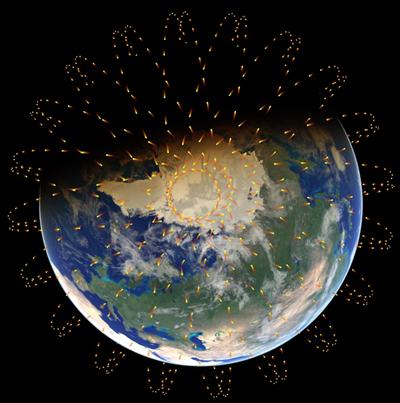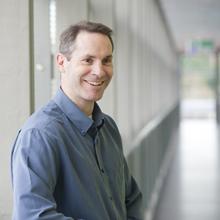Space debris: assessing the risk of large constellations in low earth orbit

Key details of this case study:
Summary: Our assessment of the environmental impact of large constellations of satellites using a space debris evolutionary model is driving new recommendations.
Status: Completed
Key staff: Dr Hugh Lewis

There has been a paradigm shift in the manufacturing of satellites. The cost of making a single communications satellite usually runs to hundreds of millions of pounds, but mass-produced satellites will potentially be much cheaper
Explore this case study:
The challenge
The opportunities provided by small satellites are enabling companies to make a significant impact on the space economy. This has caused a dramatic increase in the number of commercial operators within the space industry and the number of small spacecraft launched, particularly to low Earth orbit (LEO).
Within this context, several companies have recently announced plans to build large constellations of satellites in LEO to provide fast, low-cost communications and internet services to the world. These so-called "mega-constellations" feature thousands of satellites and could have a significant impact on the near-Earth space environment even if space debris mitigation measures are implemented.
Our challenge is to assess the potential impact of these mega-constellations on the near-Earth space environment, and the effectiveness of current space debris mitigation measures for these space systems.
What we did
In collaboration with academic and industrial partners from Europe our researchers used space debris evolutionary models, including the DAMAGE model developed at the University of Southampton, in order to better understand and evaluate a wide range of possible future environments that included mega-constellations.
The design of the constellations, their concepts of operations (CONOPS), and a range of parameters affecting the non-constellation space activities were all varied so we could gain an understanding of the key sensitivities.
Our impact
The results from our research have provided greater insight into the measures needed to safeguard the orbital environment when considering the deployment of large constellations and small satellites.
These insights are already driving new recommendations on space debris mitigation for large constellations.
In addition, the results were presented to the European Conference on Space Debris in April 2017 in an invited Highlight talk, which led to a number of articles in the media (including the BBC).
The facilities we used
We used the following facilities within the University - IRIDIS super computer, DAMAGE space debris model
Find out more about the Engineering and Environment Faculty's many world class facilities.
Partners we worked with
Dr Hugh Lewis collaborated with Mr Jonas Radtke, Technical University of Braunschweig; Dr Alessandro Rossi, IFAC-CNR.
We worked closely with industry partners Dr James Beck, Belstead Research Ltd, Ms. Pamela Anderson, Clyde Space Ltd, Dr Michael Oswald and Airbus Defence and Space.
Awards received for this research
- Invited talk at the opening plenary of the 7th European Conference on Space Debris
Related Staff Member
Other University of Southampton sites
You might also be interested in
Astronautics Research Group
Discover more about our related research group, dedicated to developing an understanding of a wide spectrum of fundamental and applied research in the field of space physics and spacecraft engineering.
Other space and satellite case studies
Learn more about the research we are undertaking in these areas.
Postgraduate Opportunities
Explore our postgraduate study options.
Media Enquiries
Make a media enquiry about this case study

